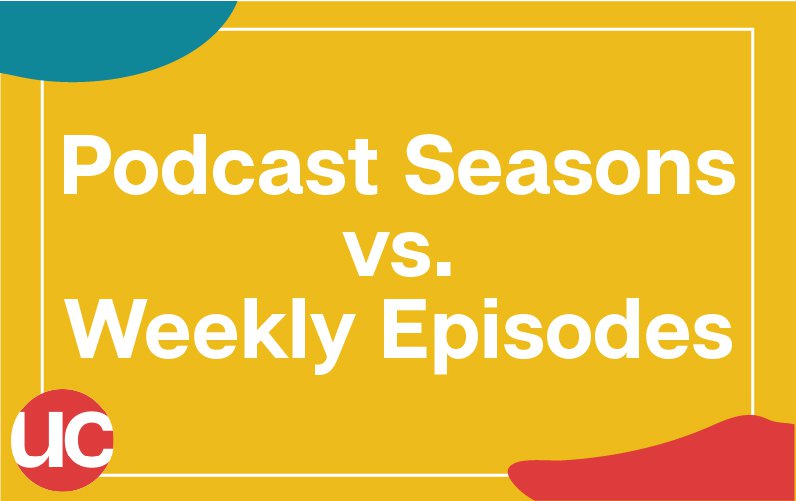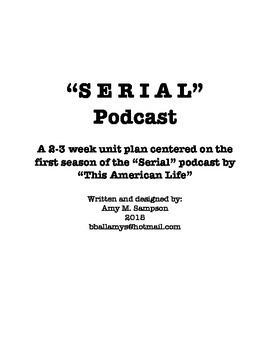What is a Podcast Season, Anyway?
A podcast season is a series of episodes that are released on a regular schedule, often with a unified theme, storyline, or topic. The concept of episodic content has been around for decades, dating back to radio shows and television series. However, the rise of podcasting has given creators the freedom to experiment with different formats, lengths, and styles. As a result, podcast seasons have evolved to become a staple of modern podcasting.
In the early days of podcasting, seasons were often dictated by the creator’s availability, resources, and content style. However, as the medium has matured, podcasters have begun to adopt more traditional television-style seasons, with a set number of episodes and a clear beginning, middle, and end. This shift has led to a more engaging and immersive listening experience for audiences.
So, how long is a podcast season? The answer varies widely depending on the show’s format, target audience, and production schedule. Some podcasts may have short seasons of 6-8 episodes, while others may have longer seasons of 20-30 episodes or more. Understanding the concept of a podcast season is crucial for creators who want to produce high-quality content that resonates with their audience.
When planning a podcast season, creators should consider their content’s complexity, audience engagement, and production resources. A well-structured season can improve storytelling, increase audience engagement, and enhance production quality. On the other hand, a poorly planned season can lead to inconsistent release schedules, poor content pacing, and inadequate promotion.
As podcasting continues to evolve, it’s essential for creators to stay up-to-date with the latest trends and best practices. By understanding the concept of a podcast season and how to plan and execute a successful one, creators can produce high-quality content that resonates with their audience and sets them apart from the competition.
Factors Influencing Podcast Season Length
When it comes to determining the length of a podcast season, several factors come into play. Understanding these factors is crucial for podcasters who want to create a well-structured season that resonates with their audience. One of the primary factors influencing podcast season length is content style. Different content styles, such as interview-style, narrative, or educational, require varying levels of production time and resources.
Target audience is another critical factor to consider when determining podcast season length. Podcasters need to understand their audience’s preferences, engagement levels, and listening habits to create a season that meets their needs. For example, a podcast targeting a younger audience may require shorter seasons with more frequent releases, while a podcast targeting an older audience may prefer longer seasons with more in-depth content.
Production schedule is also a significant factor influencing podcast season length. Podcasters need to consider their production resources, including time, budget, and personnel, to determine how many episodes they can realistically produce and release within a given timeframe. A well-planned production schedule can help podcasters avoid burnout, ensure consistent quality, and maintain a loyal audience.
Monetization strategies also play a role in determining podcast season length. Podcasters who rely on advertising revenue may need to create longer seasons with more episodes to attract and retain sponsors. On the other hand, podcasters who rely on listener support or sponsorships may have more flexibility to create shorter seasons with more focused content.
Additionally, podcasters should consider their content’s complexity, audience engagement, and production resources when determining the length of their podcast season. A well-structured season can improve storytelling, increase audience engagement, and enhance production quality. By understanding the factors that influence podcast season length, podcasters can create a season that meets their audience’s needs and sets them apart from the competition.
Ultimately, the key to determining the ideal podcast season length is to find a balance between content quality, audience engagement, and production resources. By considering these factors and experimenting with different season lengths, podcasters can find the perfect fit for their unique show and audience.
How to Determine the Ideal Podcast Season Length
Determining the ideal podcast season length can be a daunting task, especially for new podcasters. However, by considering a few key factors, podcasters can create a season that meets their audience’s needs and sets them apart from the competition. One of the most important factors to consider is content complexity. Podcasts with complex, in-depth content may require longer seasons to fully explore the topic, while podcasts with simpler content may be able to get away with shorter seasons.
Audience engagement is another critical factor to consider when determining podcast season length. Podcasters need to understand their audience’s preferences, listening habits, and engagement levels to create a season that meets their needs. For example, a podcast with a highly engaged audience may be able to get away with a longer season, while a podcast with a less engaged audience may need to stick to shorter seasons.
Production resources are also a significant factor to consider when determining podcast season length. Podcasters need to consider their production schedule, budget, and personnel to determine how many episodes they can realistically produce and release within a given timeframe. A well-planned production schedule can help podcasters avoid burnout, ensure consistent quality, and maintain a loyal audience.
So, how long is a podcast season? The answer varies widely depending on the podcast’s content style, target audience, and production schedule. However, by considering these factors and experimenting with different season lengths, podcasters can find the perfect fit for their unique show and audience.
Here are some tips and guidelines for podcasters to determine the optimal length for their podcast season:
1. Start small: Begin with a short season of 6-8 episodes and see how your audience responds.
2. Experiment with different formats: Try out different content styles, such as interview-style or narrative, to see what works best for your podcast.
3. Consider your audience’s preferences: Understand your audience’s listening habits and engagement levels to create a season that meets their needs.
4. Plan your production schedule: Create a well-planned production schedule to ensure consistent quality and avoid burnout.
5. Be flexible: Be willing to adjust your season length based on feedback from your audience and changes in your production schedule.
By following these tips and guidelines, podcasters can create a season that meets their audience’s needs and sets them apart from the competition.
Popular Podcast Season Lengths: What’s Working for Others
When it comes to podcast season length, there is no one-size-fits-all approach. Different podcasters have found success with various season lengths, and what works for one show may not work for another. In this section, we’ll examine some popular podcast season lengths and analyze the pros and cons of each approach.
One popular approach is the 8-10 episode season. This length allows podcasters to tell a complete story or explore a specific topic in-depth, without overwhelming their audience. Shows like “Serial” and “S-Town” have used this format to great success, with each episode building on the previous one to create a compelling narrative.
Another approach is the 12-15 episode season. This length gives podcasters more flexibility to explore different topics or themes, and can be particularly effective for shows that feature interviews or panel discussions. Shows like “The Tim Ferriss Show” and “How I Built This” have used this format to create engaging and informative episodes that appeal to a wide range of listeners.
Some podcasters have also found success with ongoing series, where new episodes are released on a regular basis without a set end date. This approach can be particularly effective for shows that feature news, current events, or other time-sensitive topics. Shows like “The Daily” and “Pod Save America” have used this format to create a loyal following and stay relevant in a rapidly changing world.
Ultimately, the key to determining the ideal podcast season length is to experiment and find what works best for your unique show and audience. By considering your content’s complexity, audience engagement, and production resources, you can create a season that meets your audience’s needs and sets you apart from the competition.
Here are some successful examples of podcast seasons and their lengths:
* “Serial” (8-10 episodes): A true crime podcast that tells a complete story over the course of a season.
* “The Tim Ferriss Show” (12-15 episodes): A self-improvement podcast that features interviews with successful people from various fields.
* “The Daily” (ongoing series): A news podcast that releases new episodes on a daily basis.
By analyzing these examples and considering your own podcast’s unique needs and goals, you can determine the ideal season length for your show and create a compelling and engaging listening experience for your audience.
The Benefits of a Well-Structured Podcast Season
A well-structured podcast season can have a significant impact on the success of a show. By planning and organizing episodes in a logical and coherent way, podcasters can create a compelling narrative that engages and retains listeners. In this section, we’ll explore the benefits of a well-structured podcast season and how it can improve storytelling, audience engagement, and production quality.
One of the primary benefits of a well-structured podcast season is improved storytelling. By planning episodes in advance, podcasters can create a cohesive narrative that flows logically from one episode to the next. This can help to build tension, create suspense, and keep listeners engaged. Additionally, a well-structured season can allow podcasters to explore complex topics in-depth, creating a richer and more nuanced listening experience.
A well-structured podcast season can also increase audience engagement. By releasing episodes on a regular schedule, podcasters can create a sense of anticipation and expectation among listeners. This can help to build a loyal following and encourage listeners to share the show with others. Additionally, a well-structured season can provide opportunities for listener feedback and engagement, such as through social media or email.
Finally, a well-structured podcast season can enhance production quality. By planning episodes in advance, podcasters can ensure that each episode is well-researched, well-written, and well-produced. This can help to create a consistent and professional sound that reflects positively on the show. Additionally, a well-structured season can allow podcasters to experiment with different formats and styles, creating a unique and engaging listening experience.
Some of the key benefits of a well-structured podcast season include:
* Improved storytelling and narrative flow
* Increased audience engagement and loyalty
* Enhanced production quality and consistency
* Opportunities for listener feedback and engagement
* Ability to explore complex topics in-depth
By incorporating these benefits into their podcast season, podcasters can create a compelling and engaging listening experience that sets their show apart from the competition.
Common Mistakes to Avoid When Planning a Podcast Season
When planning a podcast season, there are several common mistakes that podcasters should avoid. These mistakes can lead to a poorly structured season, inconsistent release schedules, and a lack of engagement from listeners. In this section, we’ll identify some of the most common mistakes to avoid when planning a podcast season.
One of the most common mistakes is inconsistent release schedules. Podcasters should aim to release episodes on a regular schedule, whether it’s weekly, biweekly, or monthly. This helps to build anticipation and expectation among listeners, and keeps them engaged with the show. Inconsistent release schedules can lead to a loss of momentum and a decline in listener engagement.
Another mistake is poor content pacing. Podcasters should aim to create a consistent flow of content throughout the season, with each episode building on the previous one. Poor content pacing can lead to a disjointed listening experience, and may cause listeners to lose interest in the show.
Inadequate promotion is also a common mistake. Podcasters should aim to promote their show through social media, email marketing, and other channels. This helps to build a loyal following and attract new listeners to the show. Inadequate promotion can lead to a lack of visibility and a decline in listener engagement.
Other common mistakes to avoid include:
* Poorly defined target audience
* Inconsistent tone and style
* Lack of engagement with listeners
* Inadequate production quality
By avoiding these common mistakes, podcasters can create a well-structured podcast season that engages and retains listeners. Remember, the key to a successful podcast season is to plan carefully, promote consistently, and engage with listeners throughout the season.
Some tips to avoid these mistakes include:
* Create a content calendar to plan and organize episodes
* Develop a consistent tone and style throughout the season
* Engage with listeners through social media and email marketing
* Invest in high-quality production equipment and software
By following these tips and avoiding common mistakes, podcasters can create a successful podcast season that attracts and retains listeners.
Real-World Examples of Successful Podcast Seasons
Several popular podcasts have successfully implemented well-structured seasons, captivating their audiences and leaving a lasting impact. Let’s examine a few examples to understand what makes their seasons effective.
“Serial,” a true-crime podcast, is a prime example of a well-planned season. Each season focuses on a single case, with 8-10 episodes that meticulously explore the story. This format allows for in-depth storytelling, keeping listeners engaged and invested in the outcome. The show’s success can be attributed to its ability to balance complexity with a clear narrative arc, making it easy for audiences to follow and become emotionally invested.
“My Favorite Murder,” a true-crime comedy podcast, takes a different approach. The show’s hosts, Karen Kilgariff and Georgia Hardstark, release episodes on a regular schedule, often with 10-15 episodes per season. Their format includes a mix of personal stories, famous murders, and listener-submitted tales, creating a sense of community and variety. The hosts’ chemistry and banter add to the show’s appeal, making it a standout in the true-crime genre.
“How I Built This,” a podcast about entrepreneurship and the stories behind some of the world’s most successful companies, features a unique approach to seasons. Host Guy Raz releases episodes on a regular schedule, with each episode focusing on a single company or founder. While not strictly adhering to a traditional season format, the show’s thematic approach creates a sense of continuity and cohesion, making it easy for listeners to follow and engage with the content.
These examples demonstrate that there is no one-size-fits-all approach to podcast seasons. The key to success lies in understanding your audience, content, and production capabilities, and using that knowledge to create a format that works for your show. By experimenting with different season lengths and formats, podcasters can find the perfect balance to engage and retain their listeners.
Conclusion: Finding the Perfect Podcast Season Length for Your Show
Mastering the art of podcast season length is crucial for creating engaging and effective content. By understanding the factors that influence season length, considering popular formats, and learning from successful examples, podcasters can make informed decisions about their show’s structure. Remember, there is no one-size-fits-all answer to the question of how long a podcast season should be. The key is to experiment, analyze, and adapt to find the perfect balance for your unique show and audience.
When determining the ideal podcast season length, consider your content’s complexity, audience engagement, and production resources. A well-planned season can improve storytelling, increase audience engagement, and enhance production quality. Avoid common pitfalls like inconsistent release schedules, poor content pacing, and inadequate promotion, and instead focus on creating a cohesive and engaging narrative arc.
Ultimately, the goal is to create a podcast season that resonates with your audience and leaves a lasting impact. By taking the time to carefully plan and structure your season, you can increase your show’s chances of success and build a loyal listener base. So, don’t be afraid to experiment and try new things – with patience, persistence, and practice, you can find the perfect podcast season length for your show.







